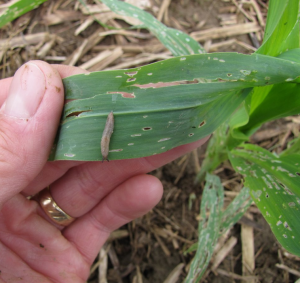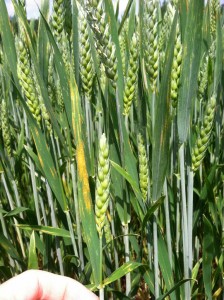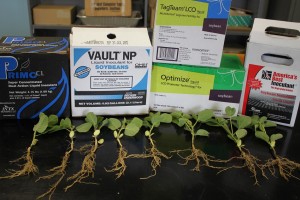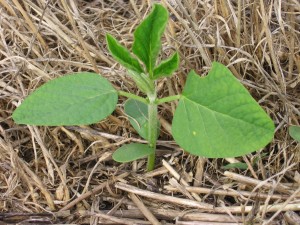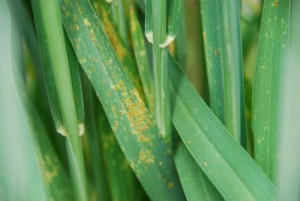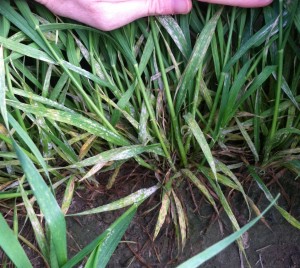As we are getting close to a new peanut season, I thought you might want to know in summary what peanut “pointers” in the region and beyond are envisioning for 2016. Here I prepared a compilation of news, comments, and recommendations from the peanut specialists across the country; I included some of my own thoughts as well.
Unanimously, cultivar selection seems to be the most important production decision. Virginia-type cultivars Bailey, Sugg, Sullivan, Wynne, and Emery are recent releases, but registered seed for 2016 production is only available for the first four. They can produce high yields (Bailey in particular) and have good disease resistance package (Sullivan in particular). Bailey and Sugg have normal oil chemistry, and the others are high oleic cultivars. Wynne, Sugg, and Emery have larger kernels than Bailey and Sullivan. Runners can also be successfully grown in Virginia. Georgia-09B, Florida-07, FloRun™ ‘107’, TUFRunner™ ‘297’, and TUFRunner™ ‘511’ are preferred by shellers. I only tested Georgia-09B and Florida-07 in the past, and they both yielded comparable with Georgia-06G and Bailey. I will have an answer about the others for the next year’s planting season.
Speaking about planting, three things were always mentioned at specialist talks: rotation, rotation, and rotation. In Virginia, we are now seeing good yields because of good genetics and rotation; I don’t think we changed other cultural practices by much but could afford longer rotations when acreage dropped. In one out of three or more years peanut should be planted in the same field. Good rotation crops are corn, sorghum, cotton, and small grains, but not soybean. With longer rotations, beneficial Rhizobia bacteria should be provided at planting for optimum nitrogen fixation. Bacteria are living organisms. Handling it with care is what ensures successful inoculation. For us, liquid inoculant applied in furrow on top of the seed worked very well for the past few years. Nitrogen fertilizer seems never to work as well for peanut as an efficient inoculation.
Legumes including peanut are good scavengers of phosphorus and potassium, but require calcium, boron, and manganese, which are deficient in sandy soils preferred by peanut. Calcium and boron deficiencies are difficult to detect until after harvest in the form of “pops” when calcium was insufficient and damaged kernels by “hallow heart” when boron was not enough. Therefore, to ensure sufficient calcium and boron for the growing seed recommendation to apply these nutrients early on in the season, beginning flowering to beginning pegging, is generally accepted by all peanut specialists. Manganese deficiency is easy to see and correct for when it happens. Sulfur might have become needed in peanut production, but timely gypsum application takes care of both, calcium and sulfur. Some specialists talk about zinc toxicity. I personally have not seen one in Virginia, but it does not mean it may not be. Having soil tested every year always helps. Recommendations are to keep soil pH at 6.2 when soil-test zinc is 10 pounds per acre and 6.6 if zinc is 40; but then more manganese is needed.
Protection wise, there were many talks about PPO herbicide and neonicotinoid insecticide resistance, and removal from the market of Tilt Bravo™ because of export concerns. An early tank mix of Alto 100 SL (5.5 oz) and Bravo WeatherStik (1.0 pint) can be used instead of Tilt Bravo™. Velum Total by Bayer has proven good control of thrips in peanut tests in Virginia and North Carolina. Also an improved tank mix version of Provost has become recently available as Provost Opti by Bayer.
The bottom line, 2016 is going to be under El Niño influence, with warm weather in central Pacific; wet and cool fall and winter, dry and warm spring, and dry late summer. Ron Heiniger, corn specialist at the North Carolina State University, thinks 2016 is going to be an excellent year for corn production, but what about peanut? Warm and dry spring, dry late summer, and cool and wet fall? Oh no, not again! Maybe a good option is to get ready to plant early, if indeed the temperature is over 65 °F or better 68 °F; plant Wynne, Sugg, Gregory, and CHAMPS (I know there are still a few growers that grow those) only if irrigation is available; plant at least two cultivars in dryland, Bailey and Sullivan.

